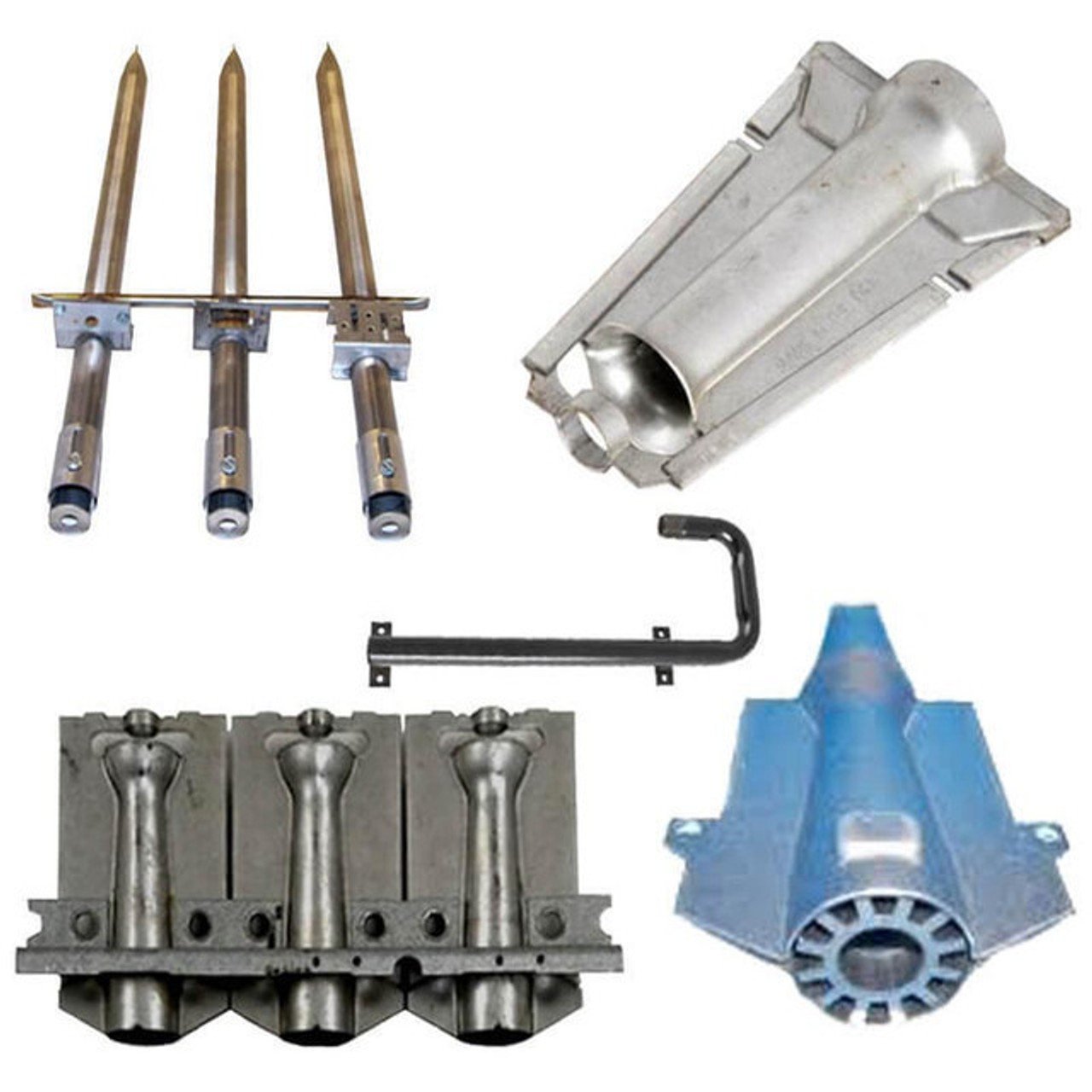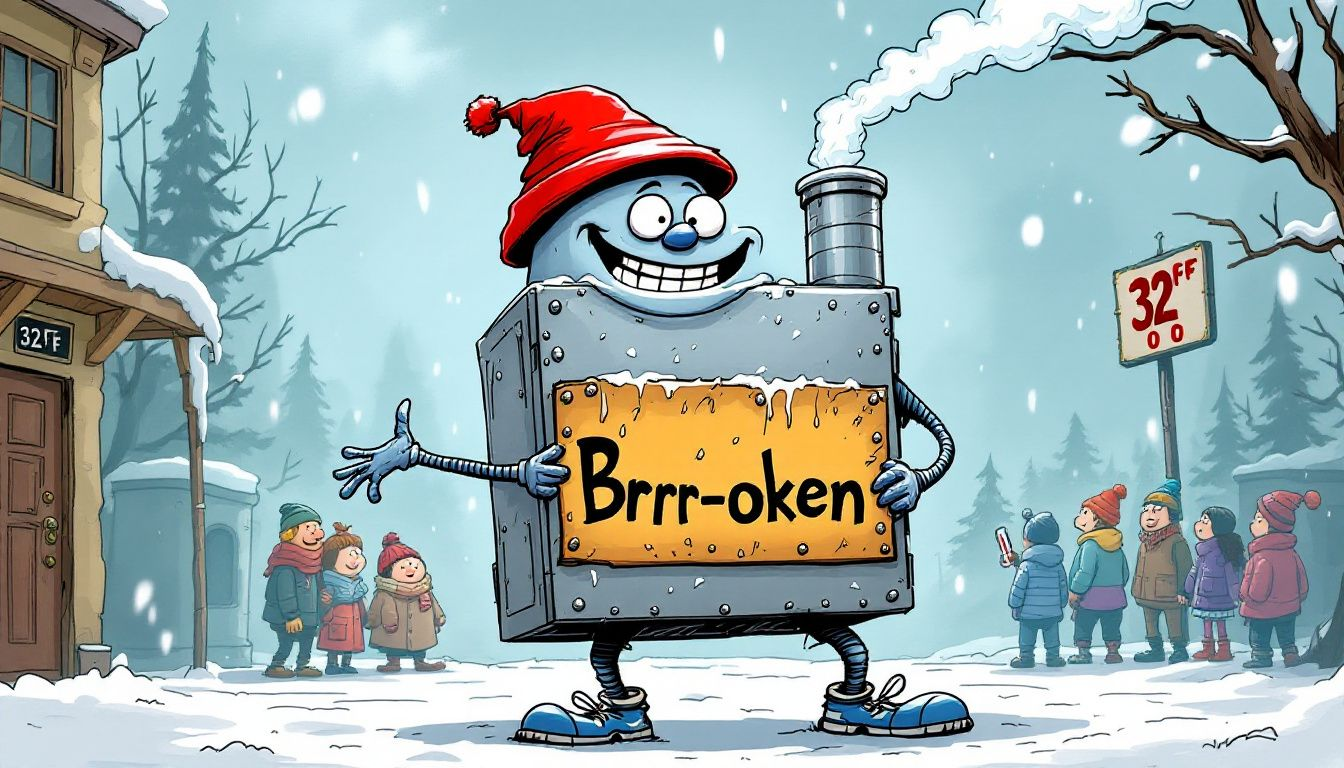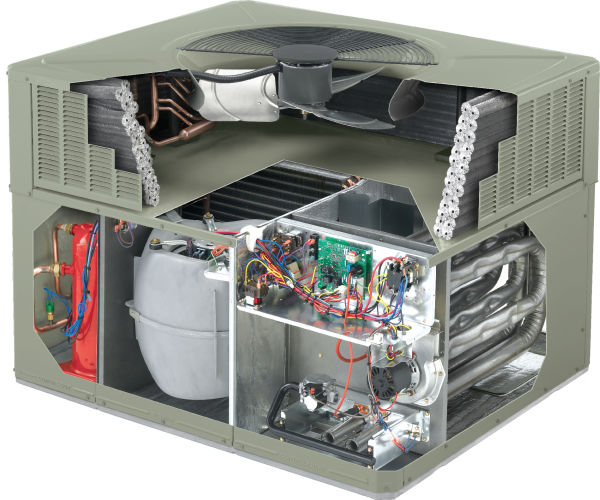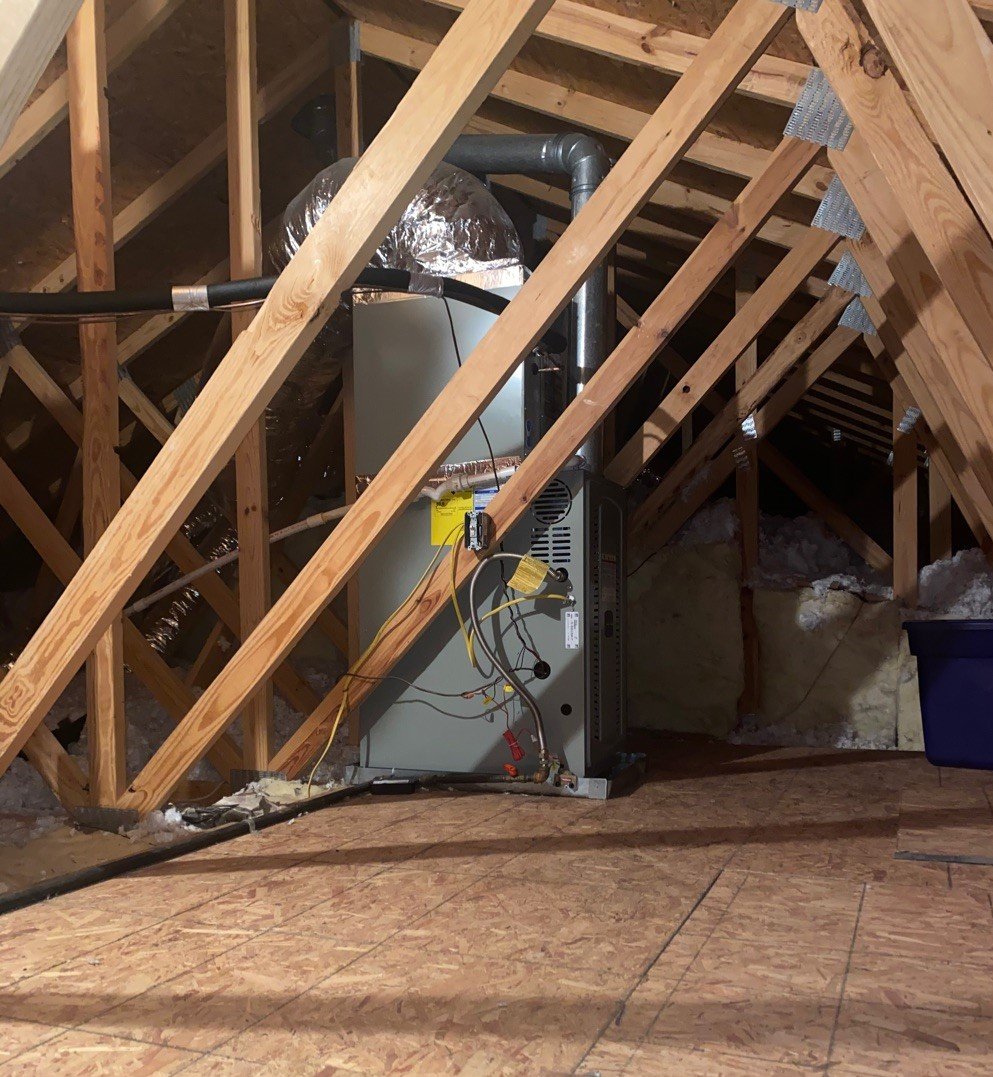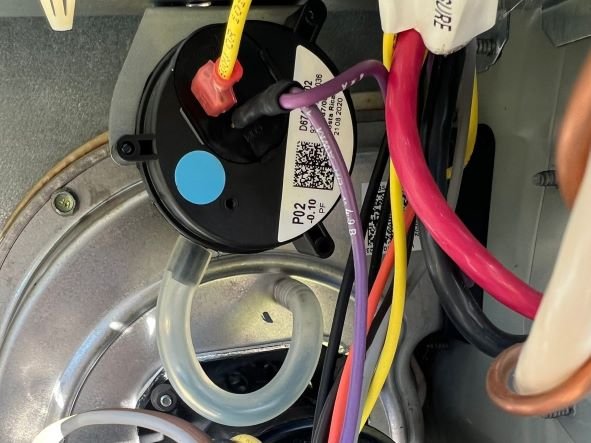Gas Furnace Limit Switch
Maximize Furnace Efficiency: Essential Guide to Your Furnace Limit Switch
If your furnace is acting up or you’re diving into HVAC maintenance, you might wonder what role the furnace limit switch plays. This critical component acts as both a monitor and a protector, crucial in regulating your furnace’s temperature, preventing overheating, and ensuring safety and efficiency. But when it malfunctions, it can lead to noticeable heating issues. In this article, you’ll discover exactly how the furnace limit switch functions, the symptoms of its failure, and solutions to keep your furnace running smoothly without immediate spoilers on detailed fixes or sales pitches.
Key Takeaways
The furnace limit switch monitors internal temperatures and regulates the heating cycle, serving as a crucial component for both comfort and safety.
Regular maintenance of the furnace limit switch is essential for efficient operation and safety, including cleaning contacts and replacing air filters to prevent overheating.
Professional servicing may be required for complex furnace issues that go beyond basic limit switch troubleshooting, such as lockout modes or motor failures.
Understanding the Furnace Limit Switch Role
Picture the furnace limit switch as the diligent manager of your furnace, monitoring internal temperatures and regulating the heating cycle. This component works in tandem with each burner, ensuring the air from the plenum is at least 20 degrees above room temperature before distribution. Like a diligent worker, the functioning furnace limit switch, in conjunction with the thermostat, maintains the heating process until your home reaches its desired warmth.
The furnace limit switch is not only vital for comfort but also for safety. One of its chief responsibilities is activating and deactivating the furnace blower assembly, which carries warm air throughout your home. More importantly, the limit switch acts as a guardian against overheating, shutting down the furnace when a certain temperature is reached, thereby protecting your furnace’s internal components.
A furnace limit switch is like a meticulous supervisor, ensuring the smooth operations of the furnace burners, furnace filters, and furnace blowers. So, whether you’re a homeowner or a furnace repair specialist, understanding the role of a furnace limit switch is crucial for furnace efficiency and safety.
Anatomy of a Furnace Limit Switch
The furnace limit switch consists of a multifaceted component, including an on/off switch for the blower fan, a temperature sensor within the furnace, and a control mechanism. Think of it like the control center of a spacecraft, with various switches and sensors that ensure the smooth operation of the furnace. An additional feature of the furnace limit switch is a manual ON switch, which allows the blower fan to run continuously if needed, all within the furnace motor compartment.
This intricate component even houses a combined fan limit switch, which regulates the heating blower fan with three temperature controls: FAN OFF, FAN ON, and FAN LIMIT. These are typically set at factory settings of 90°F, 100°F, and 200°F respectively. This means that the switch can control the fan’s operation based on the temperature inside the furnace, ensuring efficient operation and preventing overheating.
To better understand the structure of the limit switch, one can examine the arms, which indicate the settings for low and high temperatures, and the middle component responsible for controlling the fan. With this knowledge, you can better understand how your furnace operates and how the furnace limit switch plays a crucial role in ensuring your home stays warm, comfortable, and safe.
The Safety Mechanism: How the Limit Switch Protects Your Home
The limit switch is more than just a controller; it’s a safety mechanism in your furnace. It employs a bimetallic strip that bends with temperature changes, activating the switch to turn off the furnace and prevent overheating. By constantly monitoring the furnace temperature and disabling the heating process at a maximum temperature, the limit switch acts as a guardian against damage to the system.
When the internal temperature crosses a safety threshold, the limit switch shuts off power to the gas valve, effectively stopping the furnace’s operation. This safety feature ensures that the gas supply to the burners is cut off if the plenum gets too hot, protecting the furnace and heat exchanger from potential harm.
The limit switch includes three pivotal settings: FAN OFF stops the blower to avoid cold gusts, FAN ON dispatches heat through the blower fan, and FAN LIMIT deactivates the burner to avert overheating. This intricate system of settings ensures that the furnace only operates when it is safe to do so, protecting your home and its occupants from potential heating hazards.
Diagnosing Issues with Your Furnace Limit Switch
Knowledge is power, and knowing how to diagnose issues with your furnace limit switch can save you time, money, and potential discomfort. One common symptom of a malfunctioning furnace limit switch is the blower fan continuously running and not shutting off after the furnace’s burners have stopped and the air has cooled. This can lead to erratic heating and increased furnace wear, which is why replacing an old or malfunctioning limit switch is key to maintaining your furnace’s efficiency.
Another potential issue is improper calibration of the limit switch, which can cause it to fail to function at the correct temperatures. This necessitates recalibration to prevent potential overheating and ensure safety. Also, damage to the limit switch can result from exposure to debris or extreme temperatures, leading to furnace malfunction or safety hazards.
A fully failed limit switch may become stuck in the open circuit position, ceasing all furnace operations. High-limit switches may deteriorate over time and start to trip at lower temperatures, leading to unwarranted furnace lockouts and indicating the need for a replacement switch. Remember, regular maintenance can help prevent such issues and ensure the longevity of your furnace.
The Difference Between Limit and Pressure Switches in Your Furnace
While both furnace limit switches and pressure switches are safety components, they serve different functions within the furnace. Imagine the pressure switch as the furnace’s barometer, detecting negative pressure in the furnace housing and shutting down the furnace to prevent unsafe operating conditions.
On the other hand, the furnace limit switches are typically more visible to homeowners and are designed to regulate the furnace’s internal temperature, turning off the burner if the air inside gets too hot. This distinction between the roles of the two switches is crucial for maintaining the safety and efficiency of your furnace.
Understanding these differences empowers homeowners to better diagnose issues with their furnaces and to make informed decisions about repairs and maintenance. After all, knowledge is the first step toward maintaining a safe and efficient heating system in your home.
Maintaining Your Furnace Limit Switch for Longevity
Regular maintenance of your furnace limit switch can extend its lifespan and ensure the efficient operation of your heating system. This includes cleaning or replacing dirty or corroded contacts on the furnace limit switch, which is necessary for protection against overheating. Regular filter replacement is also vital, as a clogged air filter can cause the plenum to overheat, triggering the limit switch and shutting off the furnace for safety.
For those who enjoy a hands-on approach, a DIY replacement of a bad limit switch is possible. This involves using a multimeter to check for continuity and ensuring the new switch has the proper voltage ratings and temperature range. However, remember to always shut off the power to your furnace before attempting any DIY maintenance and have your furnace limit switch inspected by a professional if you’re unsure about the process.
For more complex maintenance, consider scheduling an annual furnace tune-up with a professional service. This can help maintain the limit switch and any associated airflow issues, potentially avoiding high utility bills from deeper HVAC system issues. Regular maintenance not only ensures the longevity of your furnace limit switch but also contributes to the overall efficiency and safety of your heating system.
When to Call an Expert: Troubleshooting Beyond the Limit Switch
While understanding your furnace and its limit switch is empowering, there are times when expert help is necessary. For instance, if a furnace repeatedly overheats, it can cause the control computer to enter a ‘hard shutdown’ mode, requiring professional servicing. This is known as a lockout mode, a condition where the furnace will not operate until it has been professionally serviced and reset.
Problems like HVAC unit motor failure or unusual noises often require an expert examination to identify and fix. Similarly, if a new limit switch does not remedy identified issues, contacting an HVAC expert is the recommended course of action. Inconsistent home temperatures can indicate deeper problems, such as incorrect HVAC unit size or installation, necessitating an expert’s intervention.
The furnace pressure switch plays a critical role in preventing the backdraft of harmful gases like carbon monoxide into the home. Malfunctions in the pressure switch, which can compromise safety, should be addressed by professionals who can diagnose the root cause, be it the switch itself or related issues. Remember, safety should always be the top priority when dealing with complex furnace problems.
Steps to Resetting Your Furnace Limit Switch
Resetting your furnace limit switch is a relatively straightforward process that can help resolve some common furnace issues. Here are the steps to follow:
Locate your furnace’s heating duct, typically found in the basement or a utility closet.
Use a screwdriver to open the panel.
Find the white limit switch at the top of the panel, which may be covered by a silver or white cover.
Remove the cover to access the switch.
Adjusting the setting of the furnace fan limit switch changes the points at which the blower turns on and off. However, it is not recommended for owners to alter factory settings without professional assistance. Once you’ve made the necessary adjustments, close and secure the panel with the screwdriver.
While resetting the limit switch can be a simple DIY task, remember that some issues might require professional attention. Always ensure to follow safety precautions and, when in doubt, consult with a furnace repair specialist.
Cost Implications of Furnace Limit Switch Repair or Replacement
Understanding the costs associated with furnace limit switch repair or replacement can help you budget for potential furnace maintenance. If you’re comfortable with DIY tasks, replacing a furnace limit switch yourself can be a cost-effective solution, with a new switch typically costing less than $20.
However, not all furnace issues can be resolved with a DIY approach. Professional furnace repair can range from $100 to $1,000, with an average cost of around $270. This can vary depending on the complexity of the issue, the cost of replacement parts, and labor rates in your area.
While considering these costs, it’s crucial to understand the risks associated with potentially hot air, flammable gas, and high-voltage electricity in a forced air furnace, as well as the dangers of improperly completed furnace repairs. Always prioritize safety and consider consulting a furnace repair specialist for complex repairs or if you’re unsure about performing a DIY repair.
Upgrading Your Furnace: Is It Time for a New Limit Switch?
As with any home appliance, there comes a time when upgrading your furnace’s components can lead to improved performance and safety. Upgrading a furnace high limit switch can contribute to maintaining the safety of the furnace, preventing potential overheating and the associated dangers, such as carbon monoxide leaks.
A new limit switch can enhance furnace efficiency by ensuring proper cycling between heating and blower functions, thus conserving energy. Moreover, a new limit switch can improve safety by reliably shutting off the furnace in case of overheating, minimizing the risk of fire or damage to the furnace.
So, while the initial cost of upgrading to a new limit switch may seem off-putting, consider the long-term benefits. Improved efficiency, enhanced safety, and peace of mind knowing your furnace is operating at its best are all compelling reasons to consider an upgrade.
Summary
In conclusion, understanding, maintaining, and troubleshooting your furnace limit switch is a vital part of ensuring the efficient and safe operation of your heating system. From understanding the role of the limit switch and its structure to diagnosing common issues and knowing when to call an expert, this guide has provided you with the knowledge to take control of your home heating system. Remember, while DIY fixes can be cost-effective, safety should always be your top priority. Don’t hesitate to call in a professional when faced with complex furnace issues.
Frequently Asked Questions
How do I know if my limit switch is bad?
If your furnace isn't turning on or off properly, has inconsistent temperature control, or is overheating, your limit switch might be faulty. Check if the switch is stuck or dirty and clean it if needed. A malfunctioning limit switch can cause your furnace to shut off unexpectedly or run in shorter cycles, indicating a potential problem with the switch.
How do I reset my furnace limit switch?
To reset your furnace limit switch, first turn off the power to the furnace and then locate the limit switch near the heat exchanger. Carefully remove the cover and press the reset button. If the issue persists, consider replacing the limit switch.
What does the furnace limit switch do?
The furnace limit switch activates and deactivates the furnace blower to distribute warm air through the ducts, while also shutting down the furnace to prevent overheating. This is its primary function.
Will a furnace run with a bad limit switch?
No, a furnace will not run with a bad limit switch. A bad limit switch can prevent the furnace from operating at all, and if it's stuck in the open circuit (off) position, the furnace won't run.
What causes the high limit switch to open?
The high-limit switch opens due to overheating caused by an airflow issue, typically resulting from a dirty air filter. Check and replace the air filter to resolve the problem.



